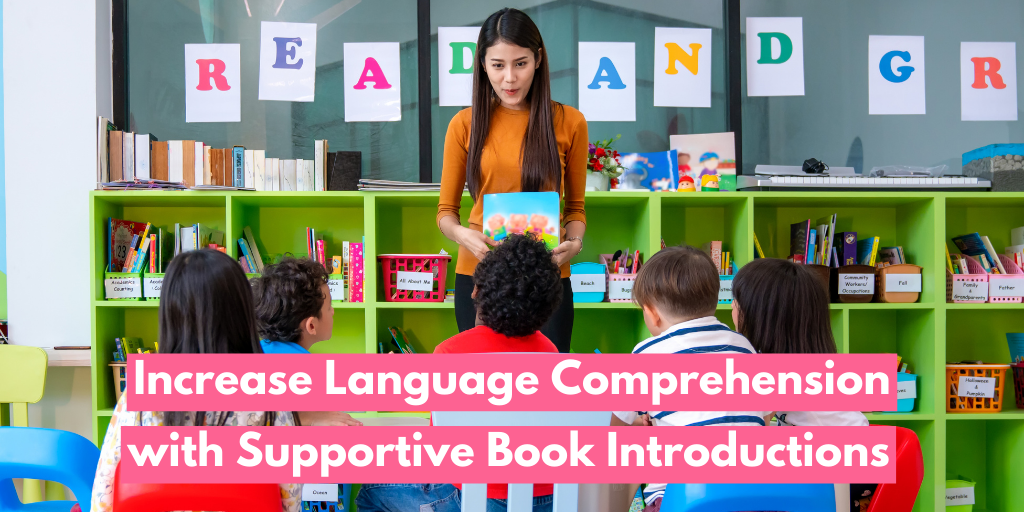by Liz Armstrong
As adult readers with highly developed orthographic knowledge, robust background knowledge, and fully-developed oral language, we can often take for granted things that children need to be supported with when reading a novel text. Scarborough’s Reading Rope (Scarborough, 2001, below) provides a visualization of how language comprehension and its many components are crucial to becoming a skilled reader. One way to increase language comprehension is to make supportive introductions to any new books.

In the words of Marie Clay “The first reading of [a] new book is not a test.” It needs to be a successful reading. Prepare the child for correct responding on the first encounter by introducing the language and the ideas through oral conversation—this is a supportive introduction. “Success can be expected if the child has had recent and successful encounters with the language, so think about what you expect him to know, and provide help with unfamiliar vocabulary. The teacher must plan for the child to have in his head the ideas and the language he needs to complete the reading. The observant teacher introduces into her talk any concept, or word, or phrase structure that she has not heard this child use before. It helps if the child knows a lot about the story before he reads it.” (Clay, 2016, p. 115)
Connection to books and practice
The work that children have to do with language comprehension (background knowledge, vocabulary and language structures) increases and becomes more complex over time. What can be mistaken for a child’s inability to decode can turn out to actually be an inability to accept a response as a possibility because the child has never heard it before. Allowing children to hear and use vocabulary and stretches of language that they have not heard or used before prior to reading a text allows for them to be able to anticipate and accept that those words or that language will fit with the story or informational text that they are reading.
While this sort of support ought to start as early as children start reading, it becomes even more important once a child starts reading books that contain language that surpasses the child’s control over oral language. Depending on a child’s circumstances, this could be as early as the very earliest text levels. For most students, even books at the mid-first grade levels start to use more literate language such as temporal phrases or start making the shift from simple sentences to compound and complex sentences. Irregular verb tenses, as well as the use of possessives shown with _’s or with pronouns such as her, his, our, etc., start coming into play as students move up in text levels. Some teachers think that this level of support is only necessary early on, but Clay tells us otherwise: “Most readers will take three or more years to reach the point where they can extend their own reading competencies with little help except from the author of the books they read. This end point is reached rather quickly and easily by some children who put the right activities together, but it is reached far too slowly and far too inefficiently for many children.” (Clay, 2016, p.128)
With that in mind, teachers need to preview texts for possible hidden challenges and think about what language or what vocabulary they haven’t heard their students use. Teachers need to be sure to include these things in book orientations, either as something that the child rehearses or that the teacher gives the child the opportunity to hear via previewing the text aloud.
Example from Joy Cowley Classics Collection:

Providing supportive book introductions is just as important at the F–H level range as it is at earlier levels. Set your students up for success by putting some time and thought into what it is that appears in a book that they might not already know, then walking them through what to expect.














































![6 Fun and Easy Activities to Practice Sequencing [Grades K-1]](http://www.hameraypublishing.com/cdn/shop/articles/Red_Typographic_Announcement_Twitter_Post-5_bf1ae163-a998-4503-aa03-555b038d1b76_600x.png?v=1689961568)
![Leveraging Prior Knowledge Before Writing and Reading Practice [Grades 1–2]](http://www.hameraypublishing.com/cdn/shop/articles/Red_Typographic_Announcement_Twitter_Post-4_600x.png?v=1689961965)




